List of Solar System objects by greatest aphelion

This is a list of Solar System objects by greatest aphelion or the greatest distance from the Sun that the orbit takes it. For the purposes of this list, it is implied that the object is orbiting the Sun in a two-body solution without the influence of the planets or passing stars. The aphelion can change significantly due to the gravitational influence of planets and other stars. Most of these objects are comets on a calculated path and may not be directly observable.[1] For instance, comet Hale-Bopp was last seen in 2013 at magnitude 24[2] and continues to fade, making it invisible to all but the most powerful telescopes.
The maximum extent of the region in which the Sun's gravitational field is dominant, the Hill sphere, may extend to 230,000 astronomical units (3.6 light-years) as calculated in the 1960s.[3] But any comet currently more than about 150,000 AU (2 ly) from the Sun can be considered lost to the interstellar medium. The nearest known star is Proxima Centauri at 271,000 AU which is 4.22 light years,[4] followed by Alpha Centauri at about 4.35 light years away according to NASA.[4]
Comets are thought to orbit the Sun at great distances, but then be perturbed by passing stars and the galactic tides.[5] As they come into or leave the inner Solar System they may have their orbit changed by the planets, or alternatively be ejected from the Solar System.[5] It is also possible they may collide with the Sun or a planet.[5]
Comets with greatest aphelion (2 body heliocentric)
The exact furthest distance from the Sun (aphelion) can be very different depending on the object's position in its orbit, as well as the epoch. An incoming asteroid could be slowed down by Jupiter, making its orbit closer to the Sun. The aphelion distance for heliocentric orbits (only taking into account the present location of the Sun as the orbited mass) can be highly inaccurate for objects with an orbital eccentricity approaching 1 (a hyperbolic orbit not bound to the Solar System) especially when the orbit is calculated while the object is near its closest point to the Sun and has not left the planetary region of the Solar System, where it passes closest to planets which could alter its orbit significantly. Barycentric solutions are more accurate because they account for the combined gravity of the Sun and the most massive planet Jupiter. An epoch of 2200 has all of these objects well outside of the planetary region of the Solar System. In 2200, comet C/2012 S4 will be 178 AU (27 billion km) from the Sun.
It should be noted that the exact position of Planet Nine is poorly known, so some comets might have been slightly perturbed by it. However, statistically only 0.17% of distant comets should pass less than 100 AU from planet Nine, and only 0.0017% less than 10 AU.
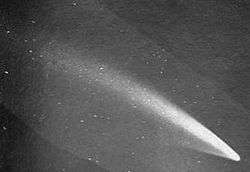
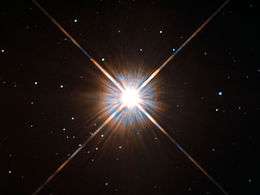
| Object | Heliocentric[1] Aphelion (Q) (Sun) Perihelion epoch |
Barycentric Aphelion (AD) (Sun+Jupiter) epoch 2200 |
Barycentric Aphelion epoch 1800 |
|---|---|---|---|
| C/2012 S4 (PANSTARRS) | 504,443 AU (8.0 ly) | 5700 AU | 8500 AU |
| C/2012 CH17 (MOSS) | 279,825 AU (4.4 ly) | 7283 AU | 26000 AU |
| C/2008 C1 (Chen-Gao) | 203,253 AU (3.2 ly) | 3822 AU | 520 AU |
| C/1992 J1 (Spacewatch) | 154,202 AU (2.4 ly) | 3651 AU | 72000 AU |
| C/2007 N3 (Lulin) | 144,828 AU (2.3 ly) | 2419 AU | 64000 AU |
| C/2017 T2 (PANSTARRS) | 117,212 AU (1.9 ly) | 2975 AU | 84000 AU |
| C/1937 N1 (Finsler) | 115,031 AU (1.8 ly) | 7121 AU | 16000 AU |
| C/1972 X1 (Araya) | 108,011 AU (1.7 ly) | 5630 AU | 4200 AU |
| C/2014 R3 (PANSTARRS) | 80,260 AU (1.3 ly) | 12841 AU | 19000 AU |
| C/2015 O1 (PANSTARRS) | 77,092 AU (1.2 ly) | 21753 AU | 52000 AU |
| C/2001 C1 (LINEAR) | 76,230 AU (1.2 ly) | ejection | 98000 AU |
| C/2002 J4 (NEAT) | 57,793 AU (0.91 ly) | ejection | 59000 AU |
| C/1910 A1 (Great January comet) | 51,589 AU (0.82 ly) | 2974 AU | 15000 AU |
| C/1958 D1 (Burnham) | 46,408 AU (0.73 ly) | 1110 AU | 7800 AU |
| C/1986 V1 (Sorrells) | 37,825 AU (0.60 ly) | 8946 AU | 5400 AU |
| C/2005 G1 (LINEAR) | 37,498 AU (0.59 ly) | 40572 AU | 110000 AU |
| C/2006 W3 (Christensen) | 35,975 AU (0.57 ly) | 8212 AU | 5300 AU |
| C/2009 W2 (Boattini) | 31,059 AU (0.49 ly) | 3847 AU | 4200 AU |
| C/2005 L3 (McNaught) | 26,779 AU (0.42 ly) | 6851 AU | 33000 AU |
| C/2004 YJ35 (LINEAR) | 26,433 AU (0.42 ly) | 2480 AU | 75000 AU |
| C/2003 H3 (NEAT) | 26,340 AU (0.42 ly) | ejection | 4900 AU |
| C/2010 L3 (Catalina) | 25,609 AU (0.40 ly) | 21094 AU | 12000 AU |
| C/1902 R1 (Perrine) | 25,066 AU (0.40 ly) | 2306 AU | 74000 AU |
| C/1889 G1 (Barnard) | 24,784 AU (0.39 ly) | 1575 AU | 2100 AU |
| C/2007 VO53 (Spacewatch) | 24,383 AU (0.39 ly) | 16835 AU | 22000 AU |
- C/2012 U1 (PANSTARRS) 24373
- C/1958 R1 (Burnham-Slaughter) 24299
- C/2010 D3 (WISE) 23255
- C/2001 K5 (LINEAR) 22810
- C/1991 R1 (McNaught-Russell) 22313
- C/2009 U5 (Grauer) 21191
- C/2014 OE4 (PANSTARRS) 21176
- C/1977 V1 (Tsuchinshan) 19631
- C/1888 P1 (Brooks) 19612
- C/2011 N2 (McNaught) 19536
- C/1910 P1 (Metcalf) 19190
- C/1882 F1 (Wells) 19135
- C/1984 W2 (Hartley) 19000
- C/2002 K1 (NEAT) 18858
- C/2002 C2 (LINEAR) 18034
- C/2008 Q3 (Garradd) 17850
- C/2013 F2 (Catalina) 16812
- C/2010 H1 (Garradd) 16721
- C/1999 T1 (McNaught-Hartley) 16693
- C/2004 P1 (NEAT) 16107
- C/1974 F1 (Lovas) 15129
- C/2013 J5 (Boattini) 14297
- C/2006 Q1 (McNaught) 13768
- C/2014 Q6 (PANSTARRS) 13761
- C/1975 V1-A (West) 13560
- C/1999 F1 (Catalina) 13390
Distant periodic comets with well-known aphelion

These can also change significantly such as if perturbed by Jupiter
- 153P/Ikeya–Zhang (0.5–102)
- 273P/Pons–Gambart (0.8–63)
- 35P/Herschel–Rigollet[6] (0.7–57 AU, returns in 2092)
- Comet Swift–Tuttle [6] (0.96-51 AU)
- 177P/Barnard (1–47)
- Halley's Comet[6] (0.59-35, for many years the most distant aphelion known)
- 165P/LINEAR (7–29)
- 122P/de Vico (0.6–34)
- 12P/Pons–Brooks (0.7–33.5)
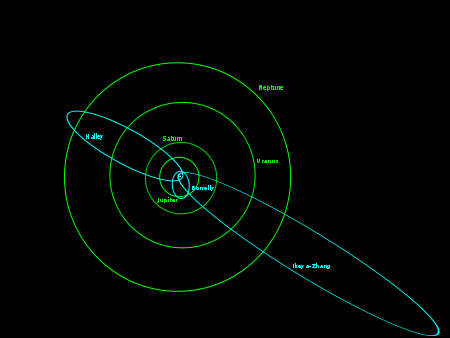
Distant comets with long observation arcs and/or barycentric
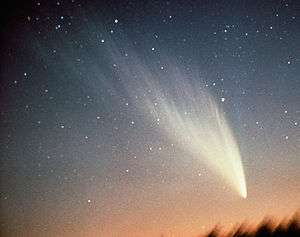
Examples of comets with a more well-determined orbit. Comets are extremely small relative to other bodies and hard to observe once they stop outgassing (see Coma (cometary)). Because they are typically discovered close to the Sun, it will take some time even thousands of years for them to actually travel out to great distances. The Whipple proposal might be able to detect Oort cloud objects at great distances, but probably not a particular object.
- Comet West 70,000 AU[7] (1.1 light-years)
- C/1999 F1 (Catalina) 66,600 AU[8] (1.05 light-years)
- C/2012 S4 (PANSTARRS) 5700 AU (barycentric)[9]
- Comet Hyakutake (C/1996 B2) 3410 AU[10]
- C/1910 A1 (Great January comet) about 2974 AU (barycentric)[11]
- C/1992 J1 (Spacewatch) 3650 AU[12]
- C/2007 N3 (Lulin) 2400[13]
Minor planets
A large number of trans-Neptunian objects (TNOs) – minor planets orbiting beyond the orbit of Neptune – have been discovered in recent years. Many TNOs have orbits with an aphelion (farthest distance to the Sun) far beyond Neptune's orbit at 30.1 AU. Some of these TNOs with an extreme aphelion are detached objects such as 2010 GB174, which always reside in the outermost region of the Solar System, while for other TNOs, the extreme aphelion is due to an exceptionally high eccentricity such as for 2005 VX3, which orbits the Sun at a distance between 4.1 (closer than Jupiter) and 2200 AU (70 times farther from the Sun than Neptune). The following is a list of TNOs with the largest aphelion in descending order.[14][15]
| Aphelion in AU |
Number of minor planets |
|---|---|
| 200–300 | 29 |
| 300–400 | 14 |
| 400–500 | 7 |
| 500–600 | 8 |
| 600–700 | 3 |
| 700–800 | 4 |
| 800–900 | 3 |
| 900–1000 | 2 |
| 1000–1500 | 4 |
| Beyond 1500 | 9 |
TNOs with an aphelion larger than 200 AU
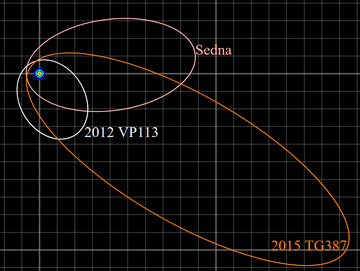
The following group of bodies have orbits with an aphelion above 200 AU,[14] with 1-sigma uncertainties given to two significant digits.
- 2017 MB7 8114 ±500
- 2014 FE72 3390 ±1400
- 2012 DR30 3248.7 ±7.5
- 2016 FL59 2454 ±250000
(uncertainty result of 33 day obs arc) - 2005 VX3 2081 ±430
- 2013 BL76 2064.1 ±5.1
- 2015 TG387 2037 ±340
- 2015 KG163 1612 ±12
- (308933) 2006 SQ372 1547 ±2[16]
- 2013 SY99 1297 ±41
- 2002 RN109 1126 ±49
- 2013 AZ60 1062.00 ±0.49
- (87269) 2000 OO67 1000.3 ±3.8
- 2007 DA61 990 ±130[14][15]
- (523622) 2007 TG422 902.29 ±0.44
- 90377 Sedna 890.5 ±1.1
- 2015 BP519 863 ±1[17]
- 2017 UR52 822 ±230
- 2015 RX245 778 ±63
- 2010 BK118 772.20 ±0.46
- 2018 MP8 747 ±23
- (418993) 2009 MS9 707.17 ±0.22
- 2010 GB174 671 ±46
- 2013 RF98 665 ±22
- 2015 GT50 626.7 ±5.6
- (474640) 2004 VN112 583.6 ±3.2[18][19]
- 2013 FT28 582 ±20
- (336756) 2010 NV1 570.76 ±0.18
- 2017 SN33 560 ±56
- 2014 SR349 545 ±33
- 2011 OR17 532.13 ±0.29
- (523719) 2014 LM28 524.28 ±0.14
- 1996 PW 500.56 ±0.64
- 2012 KA51 444 ±4000
- 2012 VP113 431.2 ±2.3
- 2014 GR53 421.47 ±0.08
- (82158) 2001 FP185 419.14 ±0.12
- 2015 RY245 414.5 ±7.7
- 2002 GB32 402.41 ±0.99
- (148209) 2000 CR105 398.1 ±1.1
- 2015 FK37 377 ±130
- 2017 CW32 372.37 ±0.17
- 2013 FS28 360 ±180
- 2003 SS422 360 ±270
- 2015 GX55 352.6 ±2.6
- (505478) 2013 UT15 347.5 ±1.4
- 2012 GU11 346.89 ±0.13
- (468861) 2013 LU28 342.26 ±0.22
- 2007 VJ305 342.13 ±0.30
- 2010 GW147 328.97 ±0.75
- 2017 DO121 328 ±2300
- (469750) 2005 PU21 313.15 ±0.12
- 2013 UH15 305 ±15
- (506479) 2003 HB57 294.2 ±1.2
- (508338) 2015 SO20 290.51 ±0.07
- 2015 KH163 274.4 ±1.0
- 2015 TS350 272.23 ±0.13
- (496315) 2013 GP136 269.08 ±0.33
- 2005 RH52 266.30 ±0.35
- 2017 UW51 265.97 ±0.15
- (445473) 2010 VZ98 265.88 ±0.04
- 2013 JO64 263.03 ±0.22
- 2014 OS394 256.59 ±0.10
- 2014 JW80 247.08 ±0.17
- 2014 OR394 245.09 ±0.17
- 2014 SS349 243 ±24
- 2007 LH38 239.99 ±0.15
- 2007 TU431 234 ±2900
- (353222) 2009 YD7 230.54 ±0.08
- 2014 UY224 230 ±16
- 2013 GJ138 226.99 ±0.12
- 2015 KE172 222.11 ±0.11
- (54520) 2000 PJ30 222.0 ±1.9
- 2015 RB279 219.26 ±0.10
- (523718) 2014 KZ101 218.84 ±0.02
- 2007 TC434 217.24 ±0.09
- (523726) 2014 MJ70 205.51 ±0.04
- (181902) 1999 RD215 204.83 ±0.24
- 2014 NV65 204.6 ±1.5
- 2015 VD168 204.35 ±0.49
- (523778) 2014 YK50 202.30 ±0.02
- 1999 CZ118 202.29 ±0.33
- 1999 DP8 200 ±"5,500,000 AU (90 ly)"
(lost object w/ 1 day obs arc)
TNOs with an aphelion between 100 and 200 AU

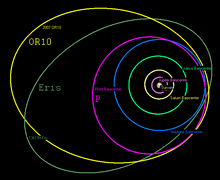
The following group of bodies have orbits with an aphelion between 100 and 200 AU.[20]
- 2018 DF4 198.71 ±0.11
- 1999 DP8 200 ±5500000
- 2004 NN8 192.58 ±0.13
- (65489) Ceto 186.92 ±0.02
- (303775) 2005 QU182 186.33 ±0.03
- 2018 KH3 185.68 ±0.51
- 2015 DW224 185.08 ±0.05
- (437360) 2013 TV158 182.86 ±0.02
- (523771) 2014 XP40 182.01 ±0.02
- 2014 KA102 179.21 ±0.09
- 2014 UZ224 179 ±16
- (184212) 2004 PB112 177.93 ±0.19
- (29981) 1999 TD10 177.69 ±0.04
- 2000 KP65 177.2 ±3.5
- 2012 FL84 173.89 ±0.07
- 2014 DT143 173.56 ±0.07
- 2015 KR174 173.11 ±0.12
- 2014 WY508 172.85 ±0.03
- (91554) 1999 RZ215 172.23 ±0.12
- 2015 RC279 171.96 ±0.23
- 2015 GY55 169.90 ±0.09
- 2014 FL72 169.7 ±5.3
- 2014 JE80 168.75 ±0.07
- 2014 SR350 166 ±23
- 2011 OB60 164.26 ±0.09
- 2015 RK245 161.22 ±0.03
- 2014 YD50 160.36 ±0.03
- 2011 WJ157 159.95 ±0.03
- 2015 VB168 159.57 ±0.89
- 2010 ER65 159.38 ±0.01
- 2015 GU55 157.73 ±0.10
- 2013 LD16 157.43 ±0.09
- 2011 BR163 157.12 ±0.04
- (118702) 2000 OM67 157.08 ±0.20
- 2014 SU349 160 ±310
- 2008 ST291 156.40 ±0.34
- 2014 SW349 156 ±20
- 2011 HO60 155.71 ±0.03
- 2003 QM112 155 ±12
- (470593) 2008 LP17 153.25 ±0.02
- (26181) 1996 GQ21 151.76 ±0.02
- 2014 FJ72 151.0 ±7.5
- (145474) 2005 SA278 149.18 ±0.02
- 1999 CY118 149.16 ±0.16
- 2005 RP43 148.63 ±0.02
- 2006 HQ122 148.05 ±0.03
- 2015 PK312 148 ±52
- 2010 JJ124 147.62 ±0.18
- 2017 RG16 147.45 ±0.03
- 2012 UK177 147.25 ±0.43
- 2014 XS3 146.89 ±0.03
- (523698) 2014 GD54 146.82 ±0.02
- (307982) 2004 PG115 144.93 ±0.01
- (145451) 2005 RM43 144.05 ±0.02
- (500832) 2013 GZ136 143.43 ±0.06
- 2015 GB56 143.16 ±0.10
- 2007 FN51 142.78 ±0.10
- 2014 OY393 142 ±20
- (82155) 2001 FZ173 141.82 ±0.08
- 2003 YQ179 140.17 ±0.06
- 2002 PR170 140 ±35
- 1999 CF119 140.02 ±0.12
- 2007 LF38 138.90 ±0.09
- 2015 GW55 137.6 ±1.6
- 2008 JO41 137.60 ±0.05
- 2005 EF304 137.55 ±0.10
- (523798) 2017 CX33 137.10 ±0.02
- 2015 PZ315 140 ±290
- 2010 JH124 136.55 ±0.14
- (523797) 2016 NM56 136.46 ±0.01
- 2015 TH367 140 ±120
- 2015 VL168 136.0 ±2.2
- 2010 PU75 135.38 ±0.01
- 2003 QY91 100 ±98000
- (523755) 2014 WZ508 132.99 ±0.01
- 2016 EJ203 132.23 ±0.02
- 1999 RZ214 131.96 ±0.13
- 2000 CP105 100 ±73000
- 2015 VQ167 131.49 ±0.47
- 1999 DG8 100 ±4000000
- 2013 BN27 131 ±21
- (15874) 1996 TL66 130.17 ±0.01
- 2014 XX40 130.07 ±0.03
- 2017 MZ4 129.23 ±0.02
- (523794) 2015 RR245 128.62 ±0.03
- 2015 TJ367 128 ±16
- 2006 HV122 127.61 ±0.17
- 2013 OR11 127.57 ±0.01
- 2003 UA414 126.94 ±0.01
- 2014 WM510 125.27 ±0.10
- 2015 KU174 125.11 ±0.04
- (523777) 2014 YF50 125.10 ±0.01
- 2014 SY349 125 ±79
- 2001 FK194 100 ±10000
- (523733) 2014 PR70 124.06 ±0.01
- 2014 SZ349 124 ±52
- 2005 NU125 122.94 ±0.02
- 2015 KZ173 122.87 ±0.09
- 2014 DQ143 122.74 ±0.03
- 2010 GW64 122.73 ±0.19
- 2013 SE99 122.5 ±2.5
- 2013 JR64 122.54 ±0.04
- 2005 OE 122.41 ±0.10
- 2012 HD2 122.21 ±0.02
- (523767) 2014 WH510 121.42 ±0.01
- 2015 RL278 120.94 ±0.06
- 2004 TF282 120.43 ±0.02
- 2015 VS167 120.42 ±0.04
- 2001 KZ76 100 ±110000
- 2000 SQ331 100 ±78000
- 2010 JO179 119.04 ±0.03
- 2014 XQ40 118.80 ±0.01
- 2003 LA7 118.53 ±0.28
- 2011 UW412 117.73 ±0.56
- 2014 WN510 117.55 ±0.05
- 2012 BZ154 117.37 ±0.07
- 2014 OO394 117 ±70
- 2017 OX68 116.29 ±0.01
- 2013 QQ95 116.10 ±0.12
- 2000 PF30 116.00 ±0.16
- 2013 JV64 116.0 ±1.7
- 2014 SO350 115.64 ±0.14
- 2000 PH30 115.23 ±0.12
- 2004 VM131 114.92 ±0.05
- 2003 FH129 114.67 ±0.10
- (451657) 2012 WD36 114.32 ±0.08
- 2015 FQ345 114.06 ±0.04
- 2005 PT21 114.04 ±0.80
- 2015 VP166 114.02 ±0.13
- (127546) 2002 XU93 113.59 ±0.04
- 2015 VO166 112.82 ±0.62
- 2015 TN178 111.64 ±0.01
- 2011 UP411 111.63 ±0.05
- 2015 DA225 111.05 ±0.47
- 2009 KN30 110.82 ±0.06
- 2015 RK258 111 ±14
- 2015 RZ278 110.69 ±0.07
- 2012 BX154 110.30 ±0.08
- 2011 UJ413 110.16 ±0.03
- 2015 RB278 109.35 ±0.28
- 2016 SW50 109.30 ±0.61
- 2015 BZ517 110 ±150
- 2007 LJ38 108.70 ±0.06
- 2012 UR177 108.68 ±0.06
- 2015 VA168 108.67 ±0.06
- 2015 KO174 108.61 ±0.03
- (471143) Dziewanna 108.54 ±0.02
- (229762) 2007 UK126 108.28 ±0.01
- 2014 UV224 108.26 ±0.04
- 2011 YN79 108.04 ±0.04
- 2005 GX206 107.71 ±0.01
- 2007 TA418 107.46 ±0.08
- 2014 UV229 107.40 ±0.03
- 2012 DY98 107.22 ±0.02
- (160148) 2001 KV76 107.11 ±0.18
- 2013 AR183 107.09 ±0.03
- 2003 OS33 106 ±72
- 2015 VR167 106.19 ±0.28
- (65407) 2002 RP120 105.99 ±0.01
- (126619) 2002 CX154 105.83 ±0.10
- 2007 RM314 105.43 ±0.06
- (145480) 2005 TB190 104.90 ±0.01
- 2015 GC56 104.69 ±0.04
- (523722) 2014 LV28 104.12 ±0.01
- (523680) 2013 YJ151 103.84 ±0.01
- 2014 FC69 104 ±16
- (471272) 2011 FY9 103.64 ±0.02
- (500876) 2013 JD64 103.63 ±0.04
- 2006 HX122 104 ±8
- 2000 AB229 103.47 ±0.42
- 2015 RH279 103.30 ±0.16
- 2001 OM109 103.17 ±0.27
- 2014 WJ510 102.90 ±0.01
- (523770) 2014 XO40 102.64 ±0.01
- 2014 SD350 102 ±98
- 2001 OT108 100 ±74000
- 2015 KF172 101 ±12
- (225088) 2007 OR10 101.17 ±0.01
- 2015 VE168 101.13 ±0.05
- 2014 FC72 101.00 ±0.01
- 2015 DX224 100.86 ±0.03
- 2012 EE18 100.82 ±0.04
- 2007 TR436 100 ±6200
- 2015 RA279 100.36 ±0.51
- 2005 LC54 100.18 ±0.13
TNOs with an aphelion between 90 and 100 AU
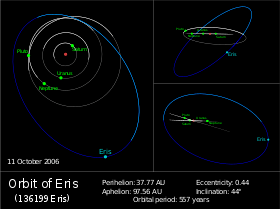
- 2014 QC442 99.9 ±1.9
- 2016 PO66 100 ±2800
- 2001 FN194 100 ±72000
- 2011 UQ412 98.80 ±0.03
- 2014 UA225 98.80 ±0.02
- 2017 YG5 99 ±25
- 2000 YY1 98 ±73
- 2006 HO122 100 ±170
- 2013 UE15 97.74 ±0.01
- (523652) 2011 LZ28 97.57 ±0.01
- (136199) Eris 97.47 ±0.01
- 2003 QK91 96.98 ±0.06
- 2004 VH131 96.96 ±0.08
- 2000 SS331 100 ±53000
- 2000 QK226 100 ±8800
- 2014 OP394 96.52 ±0.02
- 2014 FZ71 96.49 ±0.50
- 2006 QH181 96.36 ±0.63
- 2009 DJ143 96.22 ±0.02
- 2004 VG131 95.53 ±0.11
- 2015 VG168 95.49 ±0.19
- (470599) 2008 OG19 95.39 ±0.01
- (480017) 2014 QB442 95.32 ±0.01
- (523800) 2017 KZ31 95.23 ±0.01
- 2013 UR15 95.08 ±0.03
- 2001 FJ194 100 ±5300
- 2014 HC200 94.88 ±0.03
- (523639) 2010 RE64 94.46 ±0.01
- 2000 PS30 100 ±17000
- 2006 QG181 93.79 ±0.08
- 2016 CO264 93.77 ±0.00
- 2009 DD47 94 ±18
- (136120) 2003 LG7 93.56 ±0.11
- (523753) 2014 WV508 93.33 ±0.01
- 2014 ON394 93.01 ±0.04
- 2014 QR441 92.98 ±0.30
- 2015 GZ55 92.93 ±0.09
- 2006 QJ181 92.83 ±0.01
- 2015 GD56 92.66 ±0.11
- 2011 US411 92.63 ±0.03
- 2013 RO98 90 ±250
- 2015 VN166 92.40 ±0.08
- 2014 WL510 91.91 ±0.06
- 2004 HQ79 91.89 ±0.04
- 2015 KY173 91.82 ±0.14
- 2014 FX71 91.60 ±0.54
- (523787) 2015 DV224 91.38 ±0.01
- 2015 BB519 91.27 ±0.05
- 2001 KG77 90.97 ±0.13
- 2010 XE91 90.94 ±0.02
- 1998 XY95 90.91 ±0.01
- 2009 KX36 90 ±190
- 2015 RZ277 90.30 ±0.49
- 2015 VM166 90.15 ±0.05
- 2015 UH87 90 ±22
Greatest barycentric aphelion
The following asteroids have an incoming barycentric aphelion of at least 1000 AU.
| name | Heliocentric aphelion (AU) | Barycentric aphelion (AU) (1800) | Barycentric aphelion (AU) (2200) | Change (%) |
|---|---|---|---|---|
| 2014 FE72 | 3590 | 3230 | 3220 | -0.31 |
| 2002 RN109 | 1130 | 2320 | 1190 | -49 |
| 2005 VX3 | 2080 | 2140 | 1700 | -17 |
| 2017 MB7 | 8110 | 2040 | 2840 | +28 |
| 2012 DR30 | 3250 | 2000 | 2050 | +2.4 |
| 2013 BL76 | 2060 | 1850 | 1920 | +3.6 |
| (308933) 2006 SQ372 | 1610 | 1540 | 1560 | +1.3 |
| 2013 SY99 | 1300 | 1410 | 1410 | 0 |
| 2015 KG163 | 1610 | 1320 | 1320 | 0 |
| 2013 AZ60 | 1060 | 1260 | 827 | -34 |
| 2007 DA61 | 990 | 1190 | 852 | -28 |
| (87269) 2000 OO67 | 1000 | 1120 | 1070 | -4.5 |
Comparison
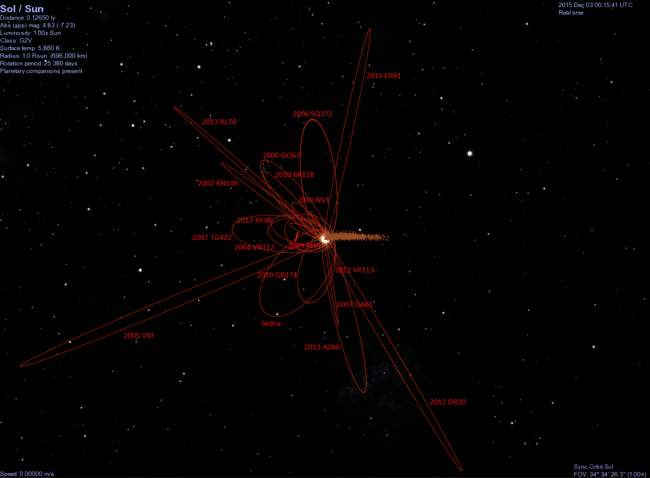
See also
- List of trans-Neptunian objects (numbered minor planets only)
- List of unnumbered trans-Neptunian objects
- List of artificial objects leaving the Solar System
- List of Solar System objects most distant from the Sun in 2015 (then-year distance from the Sun)
- List of nearest stars
- List of the most distant astronomical objects
- About comets
- List of hyperbolic comets
- List of comets with no meaningful orbit
- List of non-periodic comets
- List of periodic comets
- List of numbered comets
- Interstellar comet
- Objects of interest
- Others
References
- 1 2 JPL Small-Body Database Search Engine: Q > 20000 (au)
- ↑ "C/1995 O1 (Hale-Bopp)". Minor Planet Center. Retrieved 14 March 2018.
- ↑ Chebotarev, G.A. (1964), "Gravitational Spheres of the Major Planets, Moon and Sun", Soviet Astronomy, 7 (5): 618–622, Bibcode:1964SvA.....7..618C
- 1 2 NASA – Imagine the Universe: The Nearest Star
- 1 2 3 Frequently Asked Questions About General Astronomy
- 1 2 3 Furthest SSB
- ↑ Horizons output. "Barycentric Osculating Orbital Elements for Comet C/1975 V1-A (West)". Retrieved 2011-02-01. (Solution using the Solar System Barycenter. Select Ephemeris Type:Elements and Center:@0)
- ↑ Horizons output. "Barycentric Osculating Orbital Elements for Comet C/1999 F1 (Catalina)". Retrieved 2011-03-07. (Solution using the Solar System Barycenter and barycentric coordinates. Select Ephemeris Type:Elements and Center:@0)
- ↑ Horizons output. "Barycentric Osculating Orbital Elements for Comet C/2012 S4 (PANSTARRS)". Retrieved 2015-09-26. (Solution using the Solar System Barycenter and barycentric coordinates. Select Ephemeris Type:Elements and Center:@0)
- ↑ Horizons output (2011-01-30). "Barycentric Osculating Orbital Elements for Comet Hyakutake (C/1996 B2)". Retrieved 2011-01-30. (Horizons)
- ↑ Horizons output. "Barycentric Osculating Orbital Elements for Comet C/1910 A1 (Great January comet)". Retrieved 2011-02-07. (Solution using the Solar System Barycenter and barycentric coordinates. Select Ephemeris Type:Elements and Center:@0)
- ↑ Horizons output. "Barycentric Osculating Orbital Elements for Comet C/1992 J1 (Spacewatch)". Retrieved 7 October 2012. (Solution using the Solar System Barycenter and barycentric coordinates. Select Ephemeris Type:Elements and Center:@0)
- ↑ Horizons output. "Barycentric Osculating Orbital Elements for Comet Lulin (C/2007 N3)". Retrieved 2011-01-30. (Solution using the Solar System Barycenter. Select Ephemeris Type:Elements and Center:@0)
- 1 2 3 JPL asteroids greater than 200 AU aphelion (Q)
- 1 2 JPL asteroids aphelion greater than 800 AU
- ↑ Marc W. Buie. "Orbit Fit and Astrometric record for 308933" (2010-09-17 using 64 of 65 observations over 5.01 years). SwRI (Space Science Department). Retrieved 2008-09-05.
- ↑ Becker, J. C; et al. (14 May 2018). "Discovery and Dynamical Analysis of an Extreme Trans-Neptunian Object with a High Orbital Inclination". arXiv:1805.05355 [astro-ph.EP].
- ↑ Marc W. Buie (2007-11-08). "Orbit Fit and Astrometric record for 04VN112". SwRI (Space Science Department). Archived from the original on 2010-08-18. Retrieved 2008-07-17.
- ↑ "JPL Small-Body Database Browser: (2004 VN112)". Retrieved 2011-05-20.
- ↑ JPL database down to 100 AU aphelion minor planets